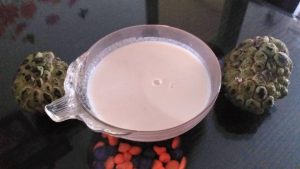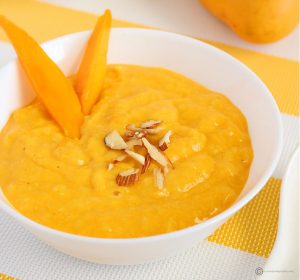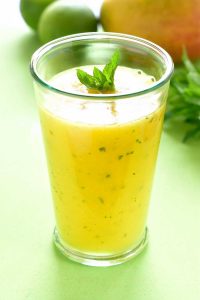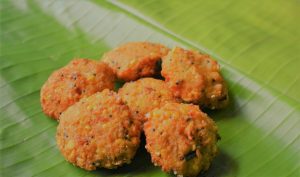Sitaphal (Custard Apple) Kheer

Dussera got over last week after a glorious Navaratri celebration all over the country. Navaratri in Tamil households involves lots of preparation from arranging and decorating the Golu to making prasadams (bhog) every single day – twice daily.
We make lots of Sundals (which is a dry salted salad-type preparation with different lentils) as prasadam. People also make different sweets to induce some variety to the prasadams. This time I tried Sitaphal (Custard Apple) Kheer as part of my prasadam. This is the season for custard apples and I got quite tempted to try out this recipe. It turned out to be pretty good and I am sure people who relish kheer would love this one.
Ingredients:
1.5 lts whole milk
18 tsps sugar
pulp of 5 custard apples
Almonds, Pistachios, Cashews, Raisins for garnishing
Method:
Boil milk in a large pan/bowl. After the first boil, add sugar and stir it occasionally till the milk starts reducing. Extract the pulp from all the custard apples by removing the seeds-its quite a task..:). Grind the pulp to a smooth paste and keep it aside.
Once the milk reduces to half its quantity, it will turn light pink in colour. Turn off the gas, add the fruit pulp and stir well. Finally you can garnish it with almonds, pistachios, cashews and raisins, roasted in ghee. This kheer tastes great when served chilled.
Now that fresh custard apples are available in abundance during this season, this recipe is definitely worth a try!!
Cheers!!!
-Bhuvana





